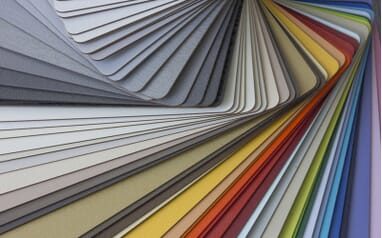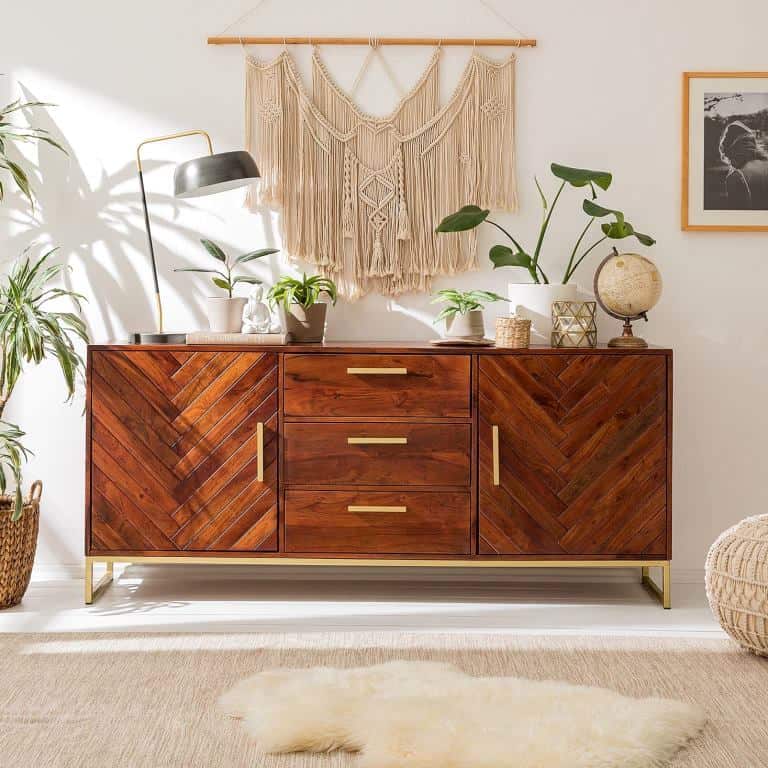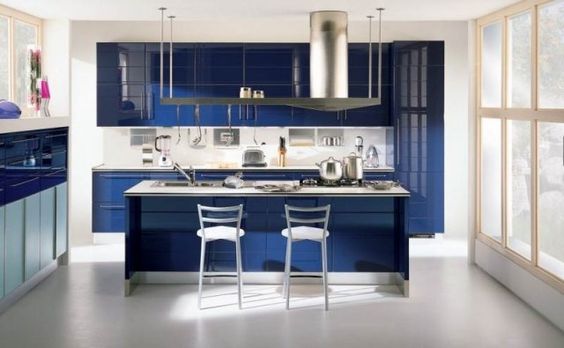Common Finishes for Plywood and Plywood Furniture in India
- Amina Husain

- Dec 16, 2021
- 8 min read
Updated: Jun 1, 2023
Plywood is the most versatile and popular choice of material used in India for making furniture, paneling, cladding, flooring, roofing and other carpentry works.
How the Plywood is made?
It is basically an engineered wooden sheet made with thin veneer sheets stuck together with a resin under high pressure. This creates a thick, strong and flexible flat sheet usually termed as plywood. It is manufactured in various types based on type of wood used, process and its application.
Types of Plywood
The main types are MR (Moisture Resistant) Grade plywood also known as commercial ply BWR/BWP (Boiling Water Resistant/Proof) Ply, and Marine Ply. This distinction is based on their capacity to resist moisture and water from damaging the sheet, commercial ply being the least resistant and marine having the highest resistance. Thus, BWR and Marine Ply are mostly used in areas where exposure to water or moisture is higher such as kitchen or a washroom.
Thickness and Size
Plywood is available in different thicknesses and sizes, the most common being 6, 8, 12 and 18mm thicknesses and 8’x4’, 7’x4, 6’x4’ sizes, to suit for different applications.

Cost
Cost of Plywood varies depending upon the type, size, thickness and brand. Generally, it ranges from Rs.70 to Rs.125 and more per square foot in Indian Market at the time of publication of this blog.
Advantages of Using Plywood
Plywood is an excellent alternative to real wood for making furniture as it is cheaper and doesn’t get warped or shrunk in the long run. Apart from these benefits, the biggest advantage is that it can be pasted with variety of finishes ranging from a simple vinyl paper to a metal sheet, to get the desired look. These finishes not only make your plywood surfaces durable, but also allow you to match them to the elements in your landscape.
And, with that, let's come to the interesting part and main topic of our discussion.
Common Finishes for Plywood and Plywood Furniture in India
What are the most popular options available for plywood finishes in Indian Market?
1. Laminates
Laminates are by far the most popular finishes available among overlays. There are numerous advantages this finish has to offer to make it the most preferred choice for furniture. They are available from many manufactures in endless choices of textures, colors, finish and feel, such as natural wooden textures, high gloss/matt colors, satin finish, core laminates, textures inspired by natural surfaces like marble, stone, terrazzo, metal finish surfaces, anti-bacterial, anti-finger marks, and even digital print, which allows one to have a substantially cheaper alternative to the real materials they are inspired by. After they are applied properly, which does not require exceptionally skilled person to do so, they are almost zero maintenance, most sturdy and durable surfaces with generally very high resistance to stains, scratches, moisture and impact.
Some manufacturers have introduced pre-laminated plywood that can save a great deal of time.
The only concern with usage of laminates is the edge finishing which is pretty sharp even after a skillful application. Thankfully laminates are constantly evolving and post-forming laminates are now available that can be bent to a certain degree to achieve no seam edge-free organic look that was earlier possible with other high-end, costlier finishes.
2. Wood Veneers
Veneers are actual thin slices of real wood. The appearance of the grain and figure in wood comes from slicing through the growth rings of a tree and depends upon the angle at which the wood is sliced. Veneers are used to provide a ‘real wood’ look to the plywood furniture which is a cheaper alternative to wooden furniture. Veneer sheets come in a variety of patterns, colors and wood grains. Sometimes they are stained and painted to achieve a certain tint and look and are often referred to as processed veneers.
Veneer sheets require to be sealed with either polish or clear laminations in either gloss or matt finish types depending upon the preference. Although these exquisite sheets can be easily pasted on plywood surfaces, one has to keep in mind that only a skilled and experienced person has to be employed to achieve the perfect flawless finish to this expensive finish. Alternatively one can choose to go with pre-finished veneers available in market to save time and effort (https://www.youtube.com/watch?v=D2NuoZnTjzE&t=59s).
When compared to laminates, veneers provide a more high-end look and feel when 'woody look' is desired but are more expensive and require higher maintenance.
3. Acrylic Sheets
Acrylic is made of polymer fiber. Acrylic sheets come in a very high gloss finish in variety of colors, are durable and can retain their sheen for very long time. Popularly used for kitchen shutters and are mostly factory finished. While acrylics can give a high end look similar to back painted glass and no waviness, they are prone to scratches and easy wear and tear. Acrylic sheets are mostly made available in market by lesser known manufacturers and hence often it is difficult to find the perfect match for color in case you need replacement. They are relatively expensive and some might prefer to use PVC laminates as an alternative to acrylic sheets. It is advisable to use PVC laminates along with acrylic sheets in combination. For example, lower cabinets in kitchen which are extensively used and touched can be finished in PVC laminates while overhead shutter can be done with acrylic sheets.
4. Polish, PU lamination, Lacquer and Varnish
You can choose to apply melamine polish, clear or stained polish, Polyurethane (PU) lamination, varnish or lacquer since the plywood surface is a natural veneer (See Blog: Types of Wood Finishes). For this reason you might use the plywood which has more visible and attractive wood grains on its surface. Lacquer and some polishes can be tinted to suit the overall theme, unlike varnish, which is always clear. These coatings can be formulated to be glossy, matt, opaque or transparent. These finishes are very quick, cheap and protect the plywood and enhance its look very well.
5. Paint-based Finishes
5.1. Polyurethane (PU) Paint
A polyurethane coating is a (type of polymer) layer applies to protect the surface. PU coating protects the surface from weather, and other harmful things which will degrade the surface over time.
Pu Paint can be of One Component or Two-Component. A one-component polyurethane coating consists of a single product ready to use; the two-component coating involves mixing two different products together. Specifically, a hardener and a resin solution. Two-component polyurethane coatings offer better results that single-component ones. In fact they can guarantee a greater resistance to abrasion and chemical agents, high durability, a higher conservation of the coating film. Polyurethane finish provides good gloss and color retention.
PU has a better strength compared to Duco, It takes more time to dry but once it is dried it is more robust. Therefore, PU is often preferred over Duco paint for exterior surfaces or surfaces that are exposed to sunlight and weather frequently.
5.2. Duco Paint
Duco Paint is a Nitrocellulose (NC) Lacquer. It is also popularly known as automotive paint which means a paint used for Auto painting and refinishing. It has now found its way into providing nice color based finish to plywood and wooden furniture and increasingly favored for its high-end finish. Duco paint dries faster than PU. After a certain period of time Duco paint may reflect a yellowish effect especially when exposed to sunlight for longer time. In terms of costing, duco paint is cheaper, provides a very close finish as PU paint, has protective properties and durability as PU and for this reason it is preferred by most homeowners.
Application off both PU and Duco often requires a skilled person to get the best results.

5.3. Chalk Paint
Chalk Paint was originally developed by Annie Sloan in 1990. Chalk paint varies from brand to brand. But most chalk-based paint is water-based. Chalk Paint is known for its chalky appearance (hence the name); it gives the surface of a furniture a dreamy, soft and ultra-matte look and is popular for giving the interiors of a rustic, farm-house, distressed or shabby chic style look (See Blog: 10 Most Popular Interior Design Styles Defined). It’s often used with soft wax, which seals the paint and leaves a silky finish. Unlike traditional paints, Chalk Paint requires little to no preparation and it tends to be thicker and easier to work with. It can be applied with several techniques like dry brushing, blending, aerosol spray or antiquing furniture. You can easily mix chalk paints to obtain your own shade.
However, it always needs to be sealed and some pieces of furniture depending upon their condition might need sanding and preparation. Waxing is labor intensive process so may require a skilled person. Waxing may be needed to repeat over a time to protect the surface. Good quality branded “boutique products” can sometimes be pricier than some other professional paint based finishes which are more durable than chalk paint. However if this is the right choice and you want to achieve an arty accent look it can definitely be the choice for just a couple of pieces or may be one, without impacting the overall budget.
6. Glass and Mirror
Glass has been used in interiors by professionals to enhance the glamour quotient of spaces since very long time. It will be interesting for you to know that there are many types of glass finishes available in the market today and apart from windows, ceilings, partitions, doors and walls they are increasingly being used for furniture finishes in recent times. Regular clear glass and mirrors, tinted or stained, textured, beveled, v-grooved, toughened, frosted, lacquered/back-painted, digitally printed glass and antique aging texture mirror, are some of the most popular types designers use today. We all pretty much know the cons of using a glass for a surface, but they can be definitely used thoughtfully.
7. Metal Sheets
Designer metal sheets are slowly gaining popularity in high-end furniture as well as paneling and interior cladding. Numerous finishes are available, from natural finishes to treated ones such as brushed, polished, tinted, printed as well as hammered for different textures (https://www.youtube.com/watch?v=D2NuoZnTjzE&t=59s).
These real metal designer sheets are by far the most glamorous and expensive way to finish a surface and therefore are reserved for only accent pieces or a feature wall. The application might need manufacturer instructions, supervision, products and sometimes installation by the makers themselves and therefore highly skilled job.
8. Corian (Acrylic Solid Surface)
Corian is a brand of solid surface material created by DuPont. It is composed of acrylic polymer and alumina trihydrate (ATH) and is an original material of its type. After DuPont’s patent expired, this material is now being manufactured by several other manufacturers. Its available in 6, 12 and 19 mm thickness. It is non porous, stain resistant and seamless due to its uniform and consistent color and particulate patterning evenly distributed throughout the material. In the fabrication process, joints can be made nearly invisible by joining with Corian's own color-matched two-part acrylic adhesive and it is often fabricated and installed by manufacturer’s own trained people or skilled fabricators. The uniform, seamless and flawless appearance of this material especially at the edges and joints is the USP of Corian. It is flexible when heated and therefore can be applied to more organic shapes very easily. It is said to retain its appearance and colors for decades, however it is prone to scratches especially in dark shades. Compared to other finishes this material is far more expensive and many other solid material options are available.
Concluding Remarks
We have summed up for you the most popular finishes that are used for plywood and furniture today in Indian Market. Each finish comes with its own characteristics and pros and cons.
Aesthetics, availability, budget, interior theme, time and skill required installing these finishes and your own preferences for materials and looks are some of the factors that affect your decision to choose the right finish for your project.
Overall, in our opinion, most widely used finish, laminates, are the best option with their endless choices of patterns, colors and feels, easy installation, less time consumption, less maintenance and economy, although paint based finishes are slowly gaining more popularity despite being more expensive due to the aesthetics particularly in high end interiors.
In a typical interior design project you are likely to see more than one finish being used and your professional interior designer would exactly know how to strike a perfect balance among so many of them.


































































Kommentare